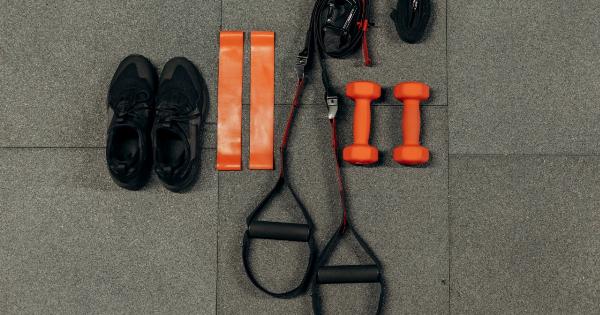Fractures can be a common and often painful consequence of bone loss, particularly in individuals with osteoporosis or other conditions that weaken the bones.
The good news is that regular exercise and physical activity can significantly reduce the risk of fractures by strengthening bones and improving overall bone health. In this article, we will guide you through a targeted workout routine designed to prevent bone loss and promote optimal bone strength.
The Importance of Exercise in Preventing Bone Loss
Exercise plays a crucial role in preventing bone loss because it directly stimulates bone remodeling, a natural process that allows old bone tissue to be replaced with new, healthy bone tissue.
Furthermore, exercise helps increase bone density, making bones stronger and more resistant to fractures.
There are three types of exercises that have proven to be particularly effective in preventing bone loss:.
1. Strength Training
Strength training exercises involving weights and resistance help build and maintain bone density.
During these exercises, the pulling and pushing actions on the bones stimulate the cells responsible for bone remodeling, promoting the formation of new bone tissue. Some recommended strength training exercises include:.
- Squats
- Lunges
- Deadlifts
- Bench press
- Shoulder press
2. Weight-Bearing Exercises
Weight-bearing exercises involve activities that require your body to work against gravity while staying upright, increasing the impact on your bones. These exercises can be high-impact or low-impact, depending on your fitness level and limitations.
Some examples of weight-bearing exercises include:.
- Brisk walking
- Jogging/Running
- Dancing
- Aerobics
- Tennis
3. Flexibility Exercises
Flexibility exercises help improve joint mobility and prevent falls, which can lead to fractures. While flexibility exercises may not directly stimulate bone remodeling, they are essential for overall bone health and reducing the risk of injuries.
Incorporate the following exercises into your routine:.
- Yoga
- Pilates
- Stretching exercises
- Tai Chi
- Pilates
A Comprehensive Workout Routine for Preventing Bone Loss
Now that you understand the importance of exercise and the different types that can help prevent bone loss, it’s time to create a comprehensive workout routine.
Aim to include a combination of strength training, weight-bearing exercises, and flexibility exercises in your weekly exercise schedule. Here’s an example of a well-rounded routine:.
Monday
Morning: 30 minutes of brisk walking.
Afternoon: Strength training session (squats, lunges, bench press).
Tuesday
Morning: Yoga or Pilates session for flexibility.
Afternoon: 30 minutes of low-impact aerobic exercise (swimming, stationary biking).
Wednesday
Morning: 30 minutes of jogging/running.
Afternoon: Rest day or light stretching exercises.
Thursday
Morning: Strength training session (deadlifts, shoulder press).
Afternoon: 30 minutes of tennis or other high-impact sport.
Friday
Morning: Yoga or Tai Chi session for flexibility.
Afternoon: 30 minutes of low-impact aerobic exercise (dancing, elliptical training).
Weekend
Rest days: Engage in light activities like walking or gardening to stay active.
Remember, this routine serves as a general guideline.
It’s important to listen to your body, make adjustments according to your fitness level, and consult with a healthcare professional before starting any new exercise regimen, especially if you have existing conditions or concerns about your bone health.
Tips and Precautions
While regular exercise is beneficial for preventing bone loss, it’s essential to keep a few tips and precautions in mind:.
- Start slowly: If you’re new to exercise or have been inactive for a while, start with low-impact exercises and gradually increase intensity and duration.
- Seek professional guidance: Consider working with a certified personal trainer or physical therapist who can create a custom workout routine tailored to your specific needs and goals.
- Proper form and technique: Ensure you’re using proper form during strength training exercises to minimize the risk of injury. If needed, consult an expert to learn the correct techniques.
- Listen to your body: Pay attention to any pain or discomfort during exercise. If something doesn’t feel right, modify the exercise or seek advice from a professional.
- Stay consistent: To see long-term benefits, aim for regular exercise sessions at least three to four times a week.
- Combine with a balanced diet: Remember that exercise alone is not enough. Maintain a well-balanced diet rich in calcium, vitamin D, and other essential nutrients that support bone health.
By following a targeted workout routine, you can effectively prevent bone loss and reduce your risk of fractures. Remember that consistency, patience, and proper form are key to achieving optimal results.
Take care of your bones and enjoy an active and healthy lifestyle!.































